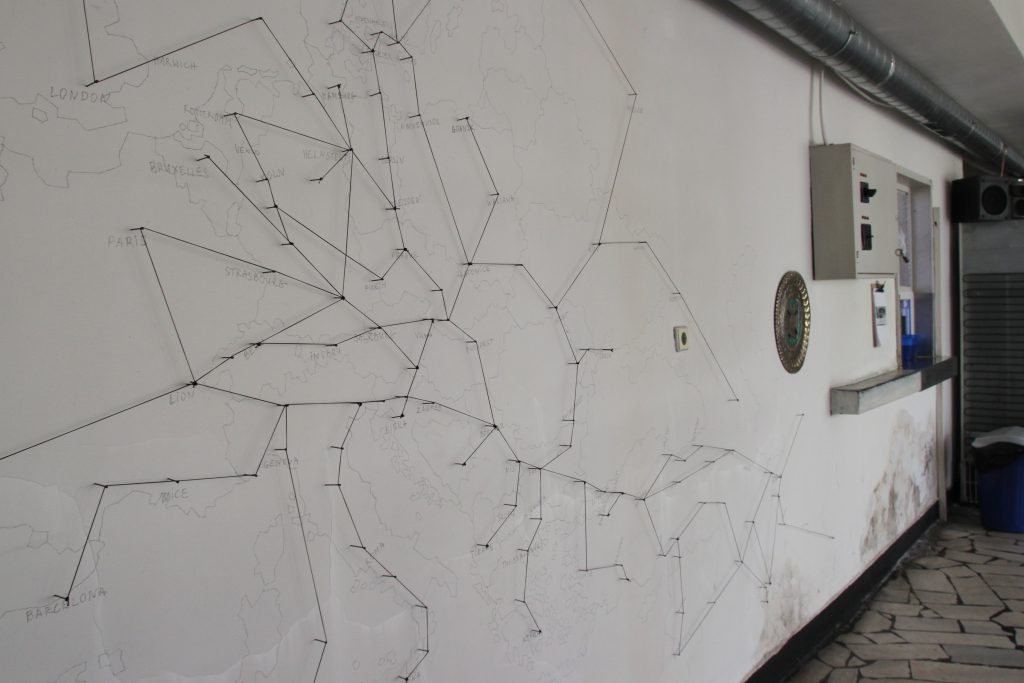
International network of routes and hubs of SO MAT, state monopolist company for trans-national cargo transport in Bulgaria in Socialist period of time, exhibition at the canteen of former SO MAT headquarter in Sofia, April 2016
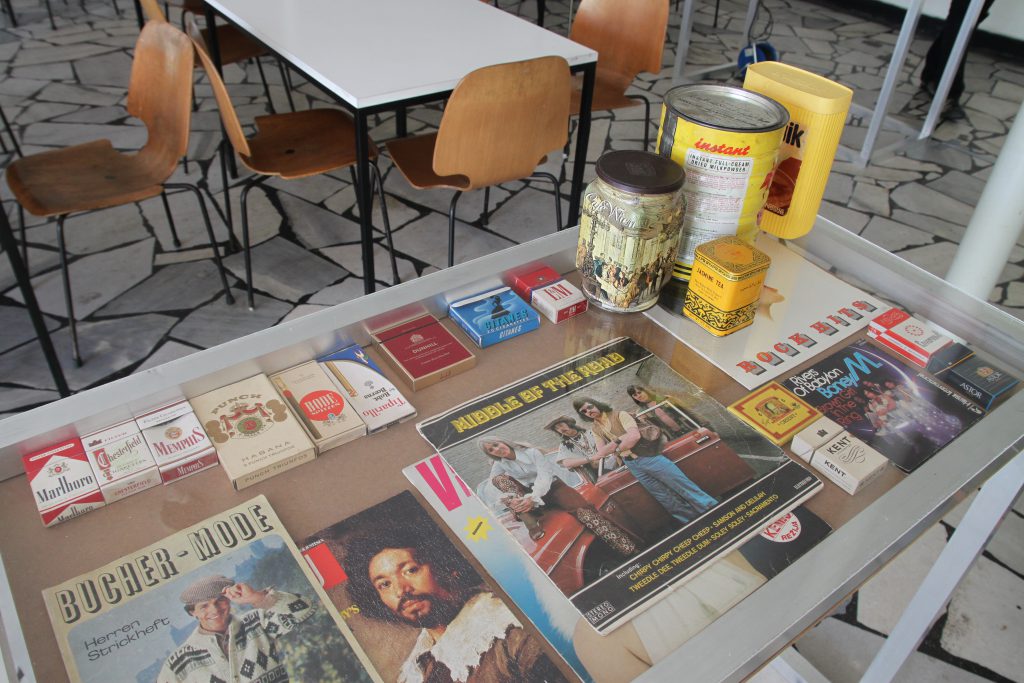
Goods smuggled during Socialist period by Bulgarian truck drivers, exhibition at former SO MAT canteen in Sofia, April 2016
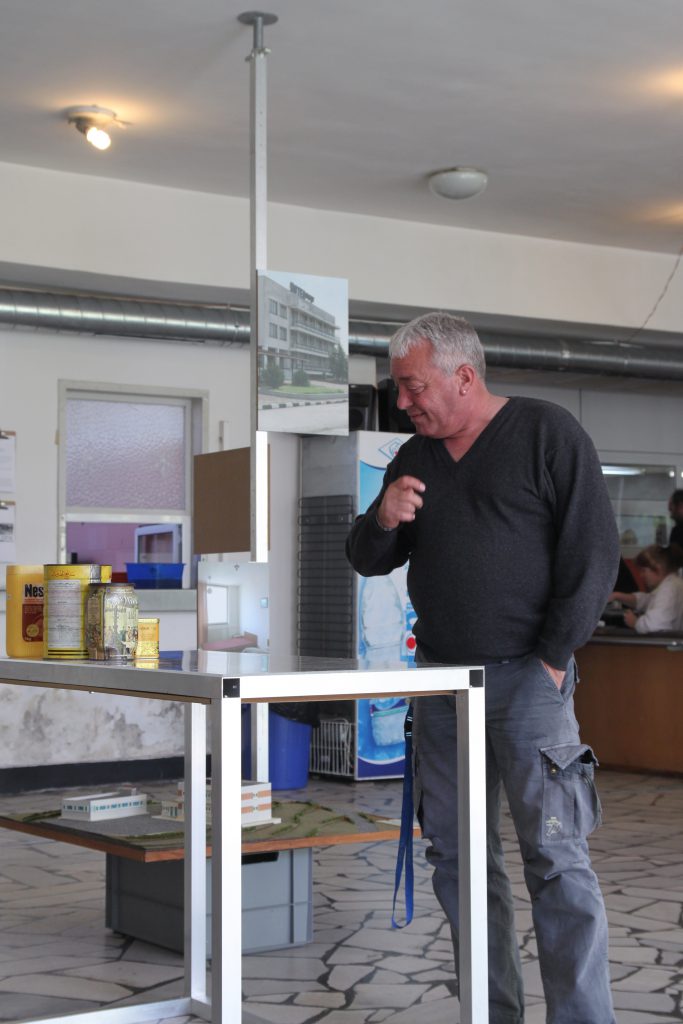
A truckdriver enjoying a vitrine full of goods, smuggled in Socialist period of time, exhibition at the canteen of former SO MAT headquarter in Sofia, April 2016
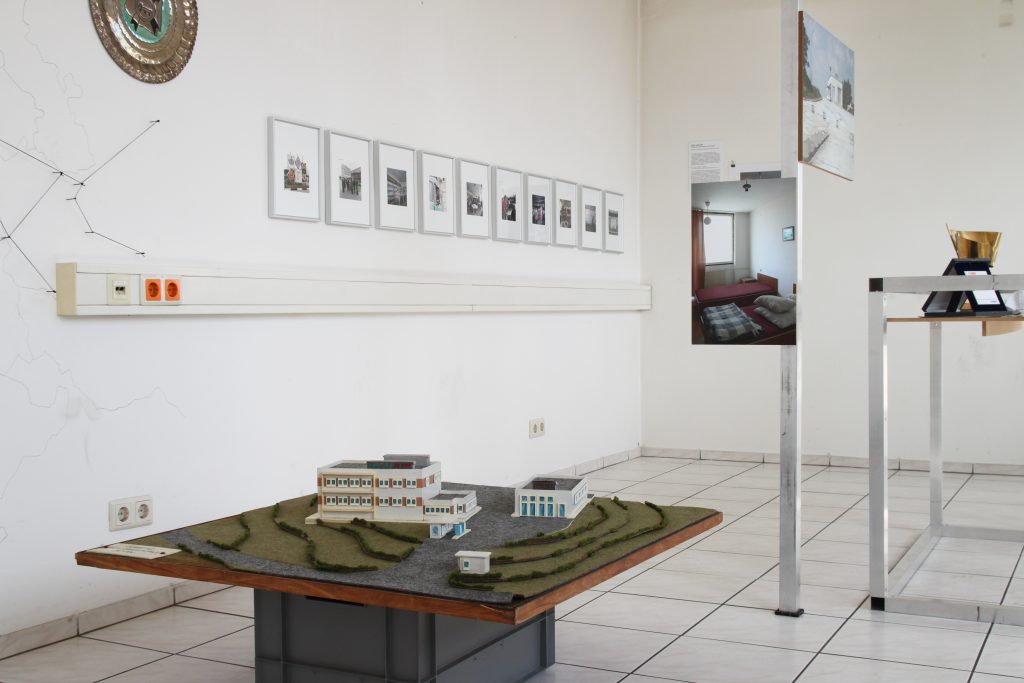
Architecture model and photos of the SOMAT service station close to the Turkish border. In the background: Photos and memorabilia from SO MAT archive, exhibited both at SO MAT canteen in April 2016 and since then in the canteen of the transport company PANALPINA in Vienna Nordwestbahnhof.
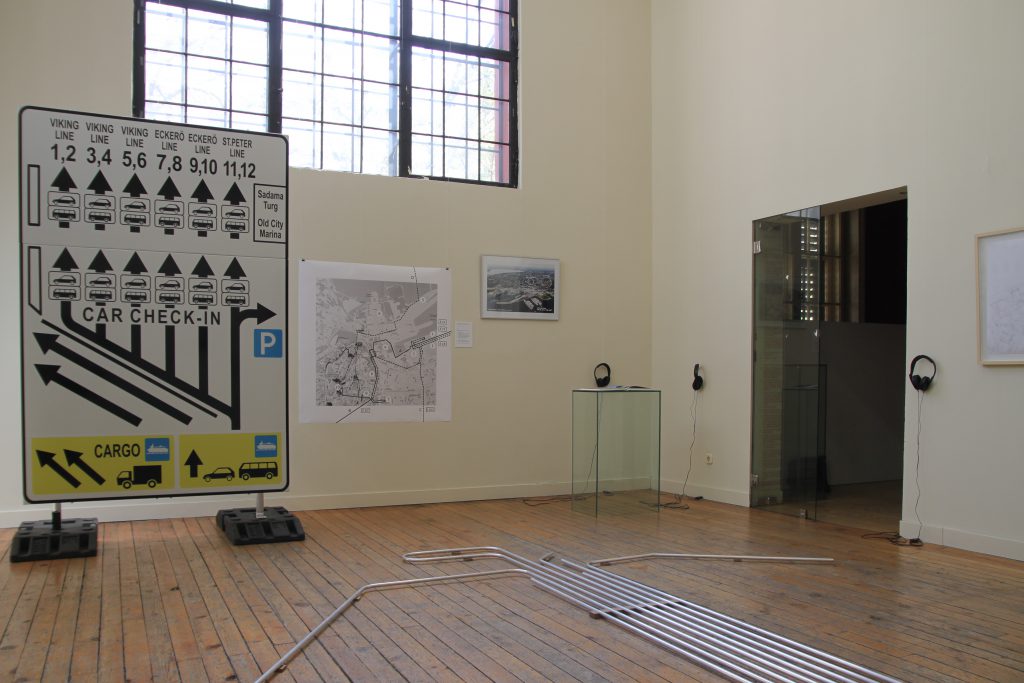
Research about Tallinn Harbor by Tarmo Pikner and Stop and Go team, exhibited at Red House Sofia in April 2016 and since then at Stop and Go project space in Vienna Nordwestbahnhof
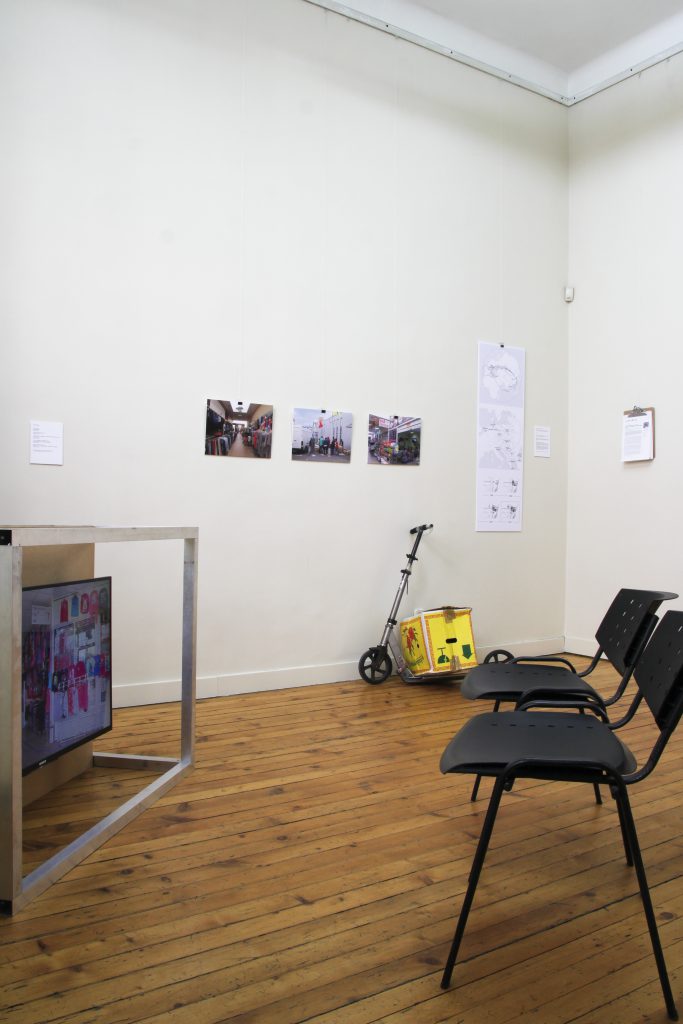
Katarzyna Osiecka and Tanja Vukosavljevic: Research about Europe’s largest Asian wholesale market in Warsaw, exhibition at Red House Sofia, April 2016
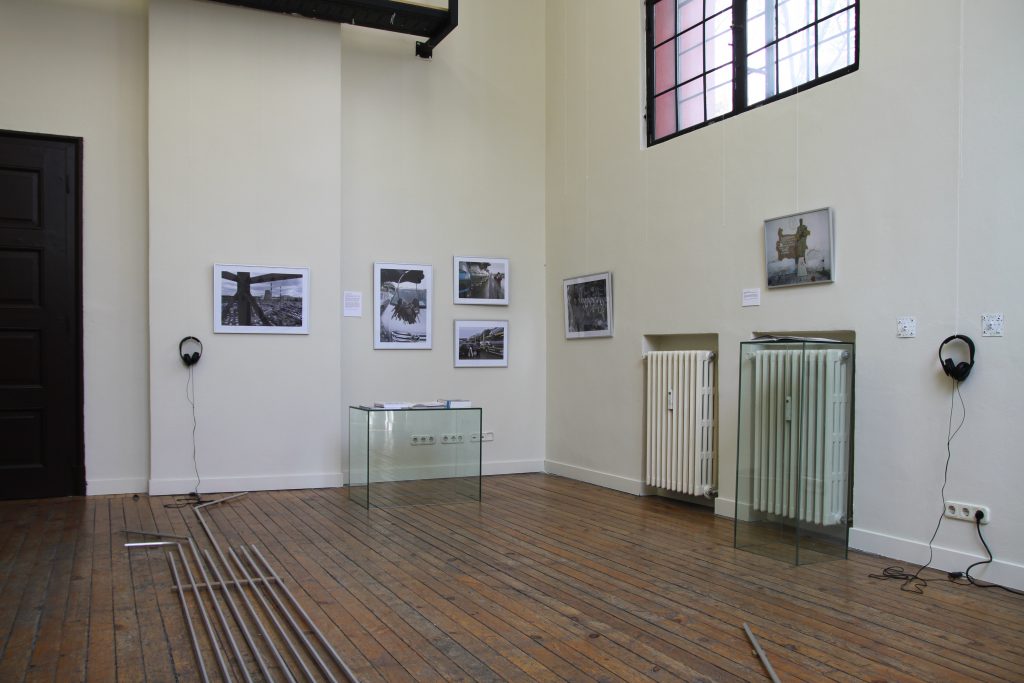
Works by Mindaugas Kavaliauskas, Vesselina Nikolaeva, and Stop and Go team, exhibition at Red House Sofia, April 2016
Sunday April 3rd
Bus Tour, Workshop and
Opening of Part 1 of the Exhibition „Transition“
10:00 Departure at Bus Stop Alexander Nevski cathedral
14:00 Opening at former SO MAT cantina Gorubliane, Samokovsko shose str., N 1 and lunch
17:00 Arrival at Alexander Nevski cathedral
The Tour leads to important nodes of transnational mobility and migration in Sofia, like markets, terminals of public transport, hubs of logistics, meeting points of migrants, e.g. the flea market in Malashevci, the freight yard, the Poduyane train station, the Female market, the former SO MAT terminal in Gorubliane.
Presenters during the tour will be:
Velislava Petrova, sociologist, assistant professor at Sofia University: „A Market in Motion?“
Dessislava Ivanova, student at Sofia University: „A walk in ‚little Beirut‘. The refugees in Sofia“
Elitza Stanoeva, historian, assistant professor at Sofia University: „The Sofia Market Hall: The Modern Urban Topology of Sofia“
Presentations in SO MAT venue:
Meglena Zlatkova, anthropologist, assistant professor at University of Plovdiv: „The tower on the Border – Imagination and the Projects across the Bulgarian-Turkish Border“
Liyba Devetakova, sociologist, PhD student at New Bulgarian University: „From Helsinki to Sofia by foot“
Elitsa Stoilova, assistant professor at University of Plovdiv: „Pathways of Urban Food“
Svoboda Stoeva, Phd Student at University of Plovdiv: „Across the Border: Asylum Seeking“
Emiliya Karaboeva, historian, lecturer at Sofia University: „Networking Eurasia. Bulgarian International Truck Drivers“
Due to its geopolitical position Bulgaria had always been a territory of trans-national and even trans-continental transit, which of course is also reflected in the history of its transport companies. SO MAT the state owned monopolist for cross-border road transport had controlled a big part of transport of cargo between Western Europe and the Near, Middle and Far East of Asia during socialist period. Emiliya Karaboeva had investigated the different layers of the wide reaching transnational networks – both the official network of the company and unofficial of the individual drivers, they successfully used for their own private business to increase both their income and social status.
The exhibition by Stop and Go in the former SO MAT cantina shows a map of these networks, items then smuggled by drivers, films, images and models of the former self-representation of SO MAT and the current status of its partly derelict service stations.
The exhibition will be open April 4th – 14th on working days from 10:00 to 18:00
Monday April 4th
15:00
Opening of Part 2 of the Exhibition „Transformation“
18:30
Discussion
at Red House Sofia, Nameless hall and Gulliver hall
ul. Luyben Karavelov, N 15, Bulgaria
with Michael Zinganel: architecture historian and artist, Academy of Fine Arts Vienna: „Stop and Go. Methods of Embedded Research in Mobility Issues“
moderated by Rossitza Guentcheva, anthropologist and assistant professor at New Bulgarian University
Tarmo Pikner, geographer, Tallinn University:
„The impact of the harbour on the City of Tallinn“
Michael Hieslmair, architecture historian and artist, Academy of Fine Arts Vienna:
„Post-socialist transformation and Streams of migration at Vienna’s International Bus Terminal“
The exhibition at Red House shows a so-called deep cartography of the comparative investigations from Tallinn and Vienna:
In Vienna – although located on the Western Side of the Iron Curtain – traffic corridors from Eastern and Southern Europe used to cross and pass through the city. Therefore the development and post socialist transformation of routes and nodes of mobility and labour migration can be easily retraced here: e.g. in the urban development and the trans-location of the international bus terminals in the City that had been characterized by a significant change of reputation and social status. The network of routes and its passengers clearly reflect the changes in the wider geopolitical area – from organized labour migration in the early 1970s to East European shopping tourists after the Fall of the Iron Curtain to the several streams of refugees.
Tallinn’s economy today is based to a large part on is the difference in income and prices between Estonia and Finland. This difference had produced a stream of labour migration of Estonians working in Finland and in exchange an enormous influx of tourists from Finland to Estonia. The closed off cargo harbour from Soviet times was replaced by large scale modern ferry boat terminals, where road corridors are changing into high capacity ferry lines. The rhythm of arrivals and departures of these boats is significantly dominating the patterns of mobility and the types of economy alongside the beaten paths of the tourists within this rather small town.
The discussion will focus on how the transformation of routes and nodes of transnational mobility and migration also reshapes the urban environment and the individuals’ strategies of economic survival and social adaption to changing situations.
The exhibition at Red House will be open from April 5th – 14th on working dasy from 10:00 to 19:00
Google Map
Contact address:
Emiliya Karaboeva – +359 899 83 14 83, emikaraboeva@gmail.com
